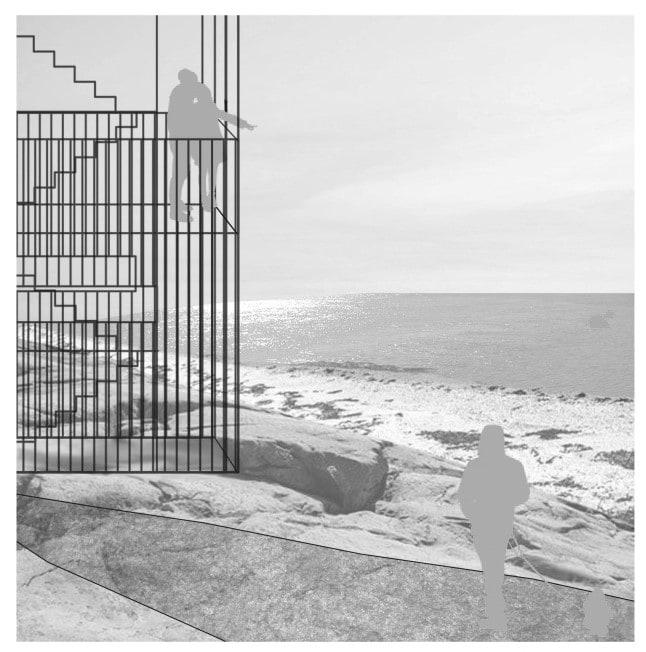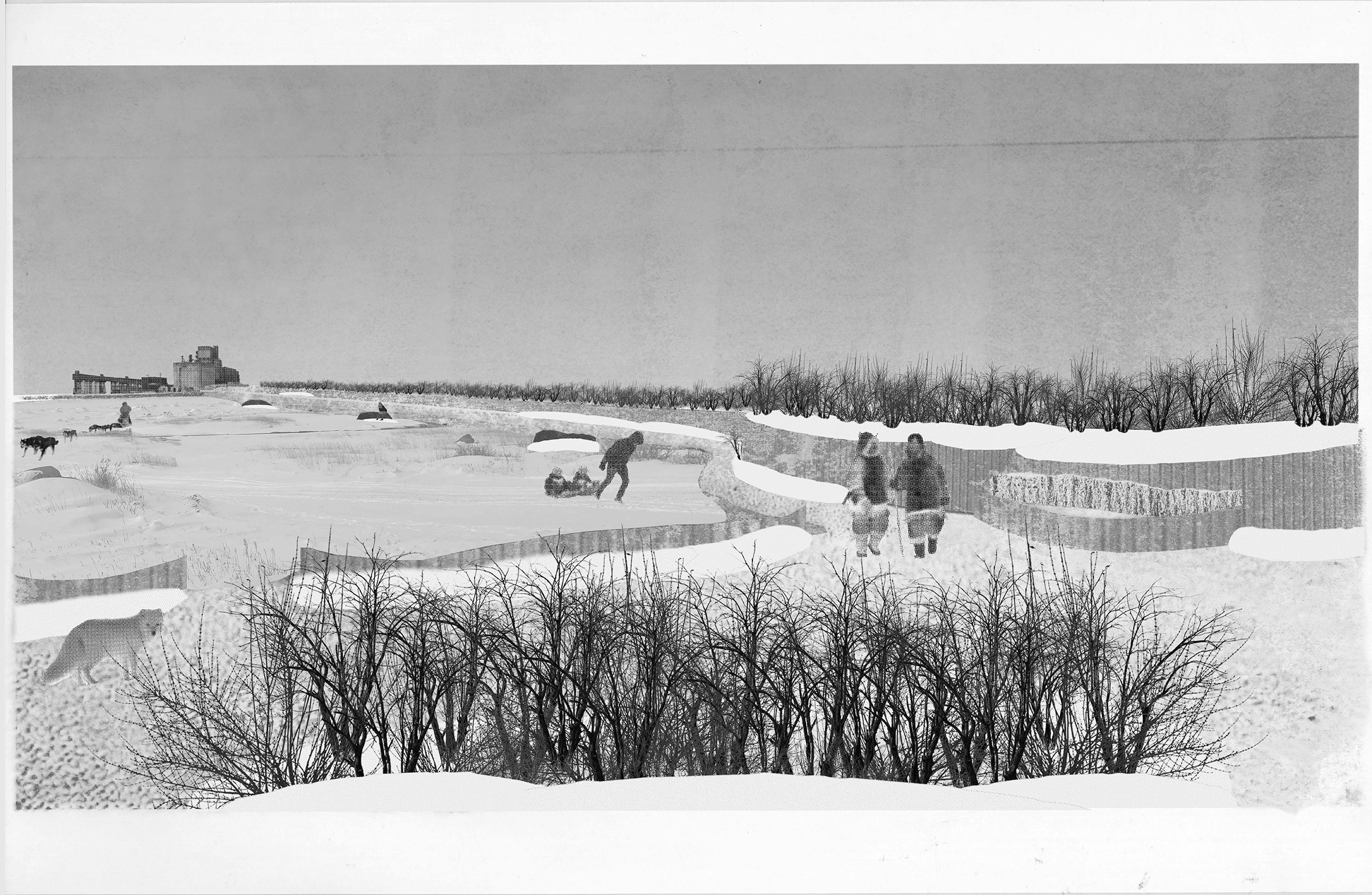Emergent Futures
Instructor: Marcella Eaton
EVLU 4014
Year 4 Environmental Design
Landscape and Urbanism Design Studio
In this studio, we will look at the Town of Churchill, Manitoba, through the lens of optimism. What is the emergent future of this settlement following the global pandemic, following years of decline, following all of the implications of climate change? Can we understand rural, small-town Canada through the thinking of urban infrastructure? What works and what doesn’t work? Should landscape designers consider rural?
How can optimism guide students of landscape + urbanism in an environmental design program to offer hope through well designed exterior space in this isolated community on the coast of Hudson Bay? Can optimism be found in the land itself? In the community? What rural infrastructure needs reinforcement, renewal, or replacement? Is the Town of Churchill always at the brink of catastrophe, or is rural infrastructure often at the brink of catastrophe? What might an optimistic design approach to an emergent future be in 2022?
Shaelynn Lukey
Tundra Trail
Shaelynn is an Environmental Design Student in the Landscape and Urbanism stream just completing her fourth year in the program. She is interested in the conservation and revitalization of historical and ecological areas focusing on naturalization that gives people the opportunity to explore outdoor areas that they otherwise wouldn’t experience.
The project located on the west side of town along the shoreline looks out onto Churchill River which offers the opportunity to create a coastal walking path, with implemented overlook infrastructure and towers that help to create a unique active experience. Starting in the south near the Port and moving north, a designed route takes users from beach to rocky cliffs to viewing platforms all while maintaining the natural landscape which is open to explore. The goal is to give residents and visitors a safe way to explore the coast with opportunities to watch boats, see Beluga whales, as well as catch the most phenomenal sunsets, sunrises, and northern lights, establishing a strong connection between the coast and the town.
Owen Swendrowski-Yerex
Owen Swendrowski-Yerex is a Landscape + Urbanism student from Winnipeg who just finished his fourth and last year of his undergrad. Outside of Landscape Architecture, his interests include fashion (voted Faculty of Architecture best dressed 2018, 2019, 2020, 2021, 2022), graphics, cycling, and reading about techno-dystopianism. Since completing his courses, he’s been hired as the Communications and Admin Coordinator at StorefrontMB. After his term, he’ll pursue a master’s degree abroad before returning to practice in Winnipeg.
The basis of this intervention was to fix what had been disturbed in the town of Churchill.
In 1976, the Churchill River was diverted into the Nelson River to build a hydroelectric dam, creating drastically low water levels and extreme tides which killed any connection between the town and the river.
The proposed jetty, anchored to the banks by a walking path and shrub garden, restores this connection in four differently programmed river access points, responding to its extreme conditions by extending out past the low water level. A fish trap weir – an ancient technology used by the Sayisi Dene, the historical inhabitants of the lands surrounding Churchill – is employed to aid in the town in sourcing more local foods.


